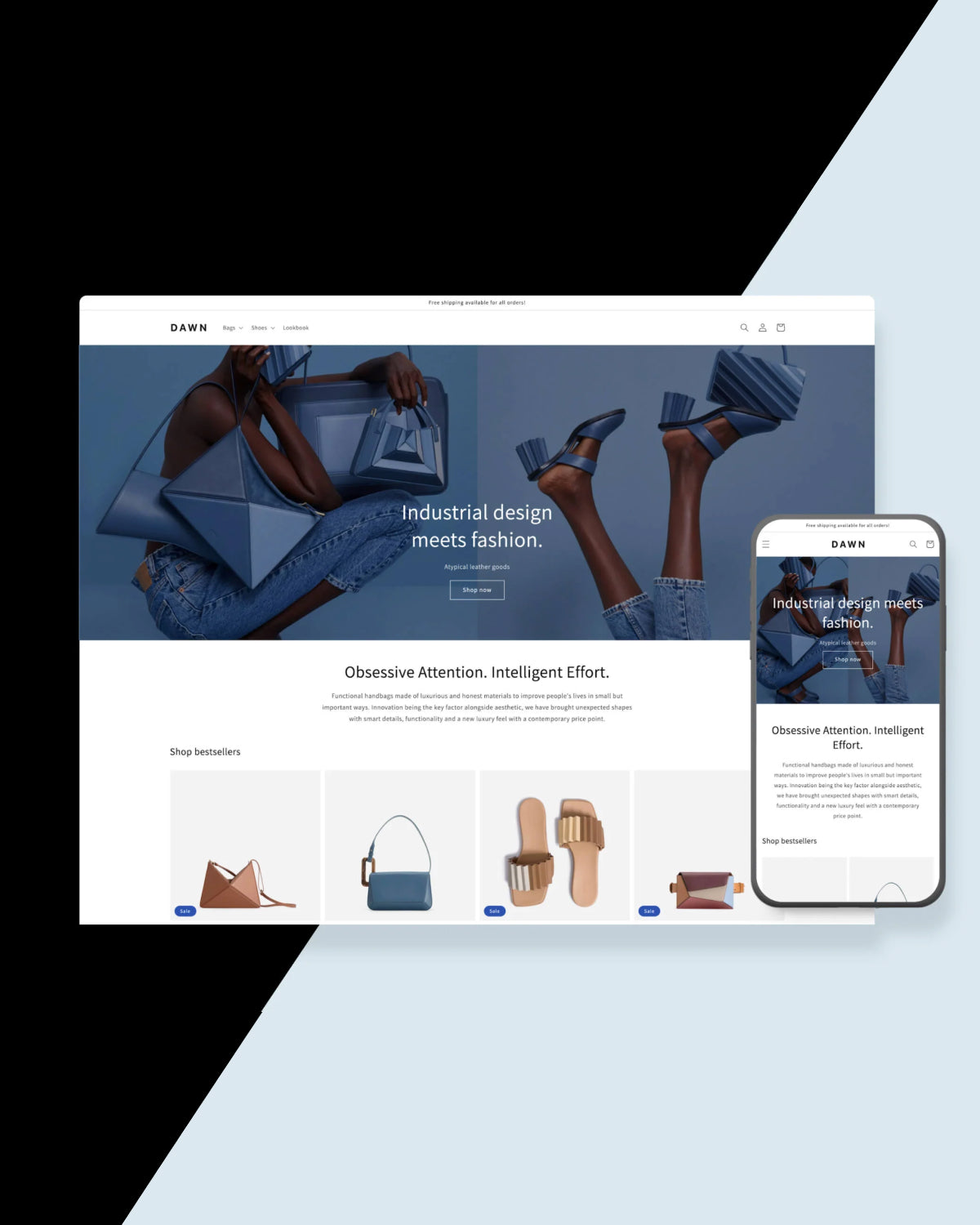Custom Storefronts – Shopify 2.0

Shopify’s much anticipated online store 2.0 is finally here! Bringing a whole host of changes, they’ve been working behind the scenes to provide a new experience for developers to create unique store experiences.
Shopify’s 2.0 update brings custom storefronts, enabling tech teams and Shopify design and development agencies like us to create new buyer experiences without the need for too much tech implementation.
Custom storefronts offer tools that allow developers access to primitives and capabilities, through APIs, SDKs and frameworks. This is a welcomed addition for merchants that prefer to have complete control over every part of the development process.
Custom Storefronts – Shopify 2.0
Online Store 2.0’s new features come with a new editing experience. Using the new editor, merchants can create storefronts from the ground up, add numerous theme extensions, and manage applications within themes. The vision for the new editor was to centralise existing features and functions, making it much easier for merchants.
Shopify is attempting to increase the platform’s visibility among developers and IT heavyweights with the new updated online shop 2.0.
The new Online Store 2.0 is all-encompassing. With the new shop, anybody can establish, configure, scale, and monetize their own Shopify business.
Shopify New Theme Architecture
The number of blocks accessible inside the store was limited in the previous edition of the online store. Previously, shops had many templates that corresponded to various items. Merchants can now add sections to each new page, previously this was only available on the homepage.
You may activate the templates for each page by using a JSON template file that describes the page’s parameters. You may use this to list all the sections of a page and collection pages, custom pages, blog articles, and other items. You can specify the parts that will appear in the JSON template files.
By navigating to the theme editor after adding the template, you may add dynamic parts as theme presets.
App Blocks & Theme Extensions
Developers may use the theme app extensions to add a variety of features and extensions. With the aid of this, you may enhance the functionality of the merchant’s website.
There was no mechanism for applications to interface with themes previously. Engineers had to create a mechanism for integrating existing themes. This resulted in complexities when creating features that worked across different themes. Luckily, this is no longer the case.
App Modules
Another plus is the app’s modularity. Now you can use the theme editor to add and delete UI components as a developer, without having to look into the theme’s code.
This makes managing the supporting materials for an app a breeze. With Shopify 2.0, you can effortlessly manage and host your app’s supporting materials on the platform.
Metafields on Shopify 2.0
Merchants may now add meta fields and attribute to their themes using the new theme editor. The good news is that you won’t need any APIs or coding to do this.
As a merchant, you have complete freedom to add whatever material you want to the product page, including space for additional information that may be useful to potential purchasers, such as a sizing chart or ingredient list. The meta fields can be used to change anything that isn’t likely to display in the shop editor.
They changed meta fields in a variety of ways, now they’re more adaptable than other types of fields. Allowing you to import e-commerce data in a secure manner.
These additions should make it much easier for store owners to make changes and really take advantage of the different tech capabilities to help create truly unique customer experiences.
Need a development team to help you scale your Shopify store? Book a quick chat with us below.

